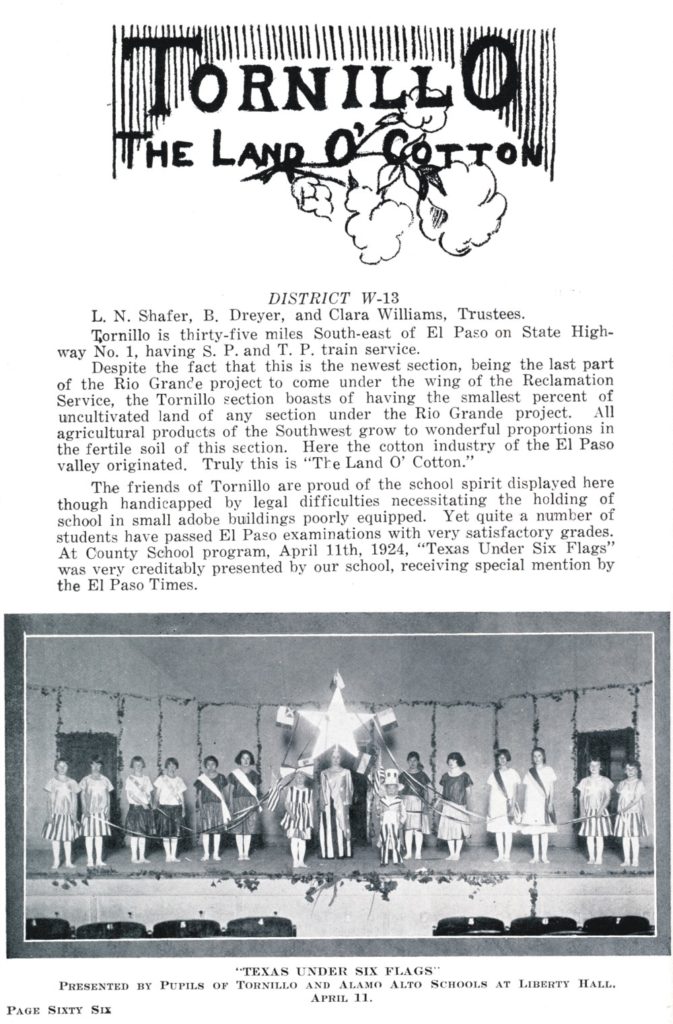It seems that before World War I, Tornillo did not have a permanent public school. In 1916 County Superintendent of Schools Myra Winkler appointed Maren Jensen to teach Tornillo’s youth in an adobe building on a mesquite sand hill. In 1918 Winkler asked Mary Miller, whose brothers worked on Ivey-Dale Farm, to conduct a school on the farm.
Tornillo was part of the Fabens Common School District. In 1921 Tornillo got their own school house. The school only taught younger children, while the older students would go to school in Fabens. In 1923, Tornillo split off from Fabens and created their own school district, Tornillo Common School and it was a county run school until 1960.
The first school trustees were Bismarck Dyer, Clara Williams, and L.N. Shafer. In 1926 a new school house was built, it was a red brick building it housed the high school and elementary school. In 1970 a new high school was opened it was star shaped and was renamed in honor of the superintendent of schools, W.E. Elliot. After Elliot died in 1980, he was succeeded by his deputy, Francis Brooks.
In 1960, Tornillo became an independent school district with Elliot as superintendent of schools, he had been principal of Tornillo School since 1951. Another head of the Tornillo school system was Thomas R. Chesser, who served as principal and also served on the county school board in 1928. The first board of the independent school district was; Firmin Burrus, Harold Ivey, Peyton Bellenger, W.J. Becughton , L.T. Shafer, C.T. Sharp and Tomie McBlhannon.
The Tornillo townsite was platted in 1909 by the Tornillo Townsite Company, it was founded because of the development of agriculture in lower valley lands motivated by the United States Reclamation Act and the construction of Elephant Butte Dam. Louis Ivey and L.A. Dale founded Ivey-Dale Farms. Ivey was one of the first farmers to grow cotton in the El Paso Lower Valley, which Tornillo is known for.
There was also a school in Alamo Alto, a small community that was right across from Mexico, right by the Rio Grande river. This community was full of various stores and businesses, and was populated by refugees from the Mexican Revolution. There was also a public school for African Americans that was started in 1922, It was taught by Muriel Henderson at the home of a prominent African American family.
Joseph Longo
EPHS Curator

